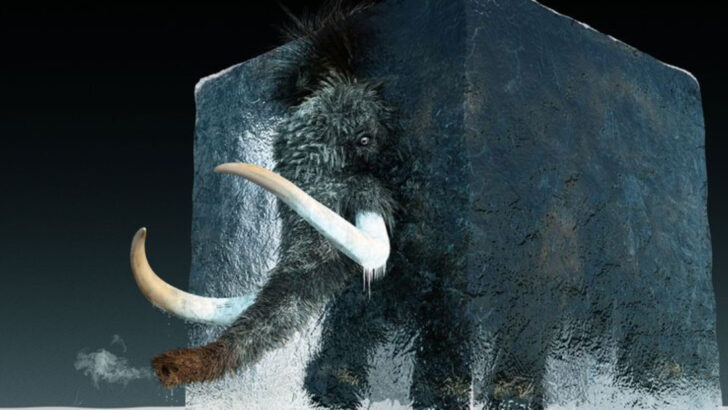Woolly mammoths were more than just oversized, furry elephants—they were some of the most remarkable creatures to ever walk the Earth. These ancient giants still spark our imaginations and stir up excitement in both scientists and enthusiasts alike.
While most people know the basics—huge tusks, thick fur, ice age residents—there’s so much more to these creatures than what meets the eye. In this post, we’ll uncover twelve wild facts about woolly mammoths that will leave you absolutely amazed.
From their survival strategies to some mind-blowing details you’ve probably never heard before, these facts will completely change how you think about these prehistoric wonders. Get ready to discover the side of woolly mammoths that’s anything but ordinary!
Woolly Mammoths Were Not Just Woolly
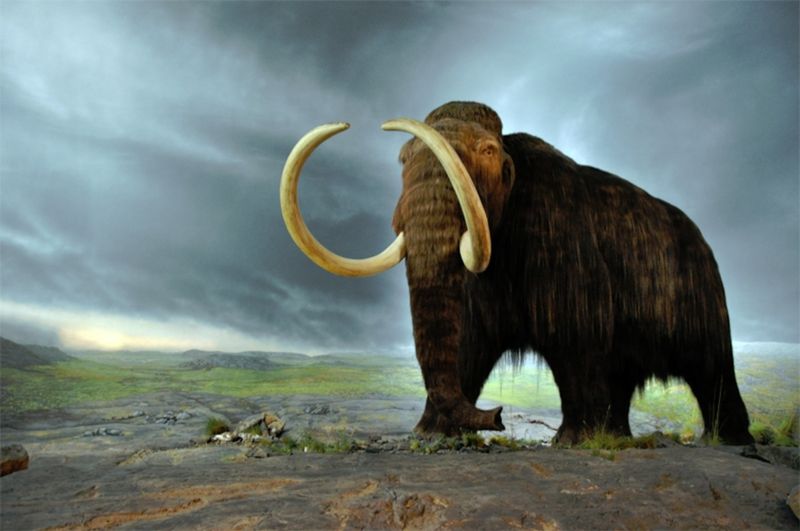
Woolly mammoths are famous for their furry coats, but did you know their hair varied in color? These majestic creatures had a range of hair colors, from dark brown to blonde.
Their thick fur wasn’t just for show; it played a crucial role in insulating them from the frigid temperatures of the Ice Age. Interestingly, their fur comprised two layers: a long outer coat and a shorter, insulating undercoat.
This combination helped them adapt to harsh climates. The diversity in their hair color is believed to be an evolutionary advantage, possibly aiding in camouflage and temperature regulation. Truly fascinating!
Mammoths Had Enormous Tusks
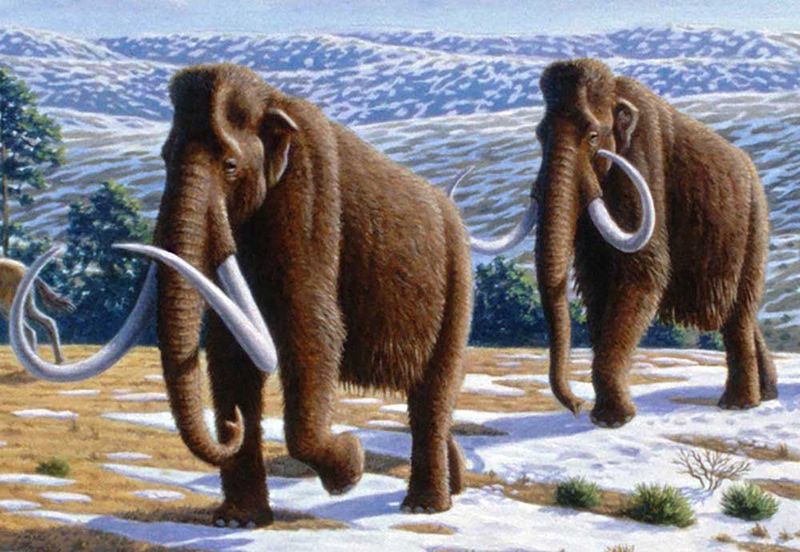
One of the most striking features of woolly mammoths was their tusks. These enormous, curved tusks could grow up to 15 feet long. They were not just for display; mammoths used them to dig through snow in search of food and to battle rivals.
The tusks also played a vital role in attracting mates, with larger, more impressive tusks being a sign of strength and vigor. Scientists study these tusks to gain insights into the mammoth’s diet and environment, as growth rings can reveal information similar to tree rings. Their tusks are a testament to their majestic presence.
They Had a Hump of Fat
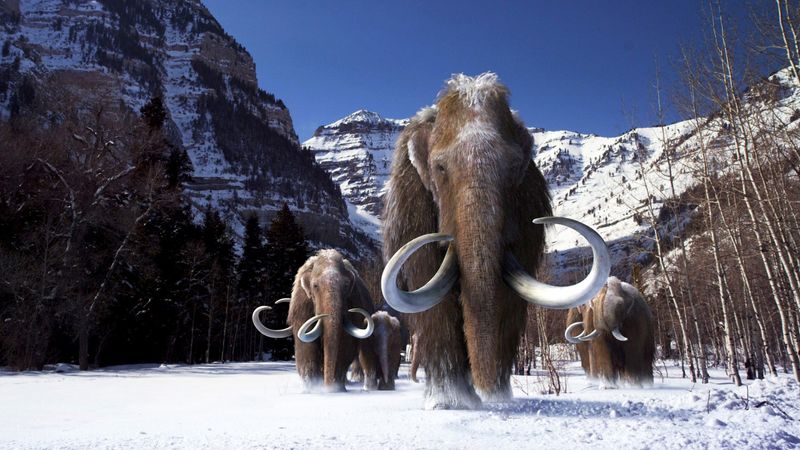
Woolly mammoths carried a distinct hump on their backs, but what’s inside might surprise you. This hump wasn’t bone or muscle; it was a store of fat, similar to a camel’s hump. This fat reserve was crucial for survival during harsh winters or periods of food scarcity.
The fat hump provided energy and insulation, helping them endure freezing temperatures. It’s a fascinating adaptation that highlights their ability to thrive in extreme environments.
Modern studies of frozen mammoth carcasses have shed light on how these animals managed to survive in such inhospitable conditions, showcasing their incredible adaptability.
Mammoths Had a Unique ‘High-Pitched’ Voice
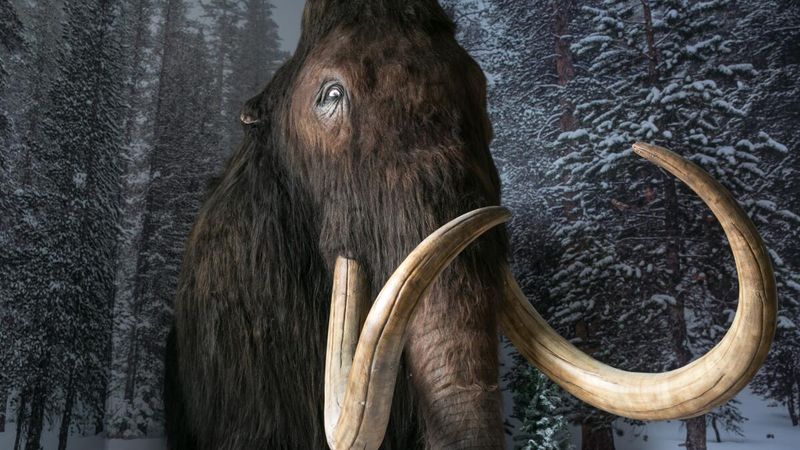
Unlike the deep, thundering trumpet one might expect, woolly mammoths had a unique vocalization. Their calls were surprisingly high-pitched, more similar to a chirp or squeak than a roar. This unique sound helped them communicate across long distances.
The structure of their vocal cords and the shape of their trunks contributed to this distinctive sound. Scientists have attempted to recreate these sounds using computer models and the preserved vocal tract of some specimens.
Understanding their communication helps us learn more about their social behavior and how they interacted with their environment and each other.
Their Teeth Were Constantly Replaced
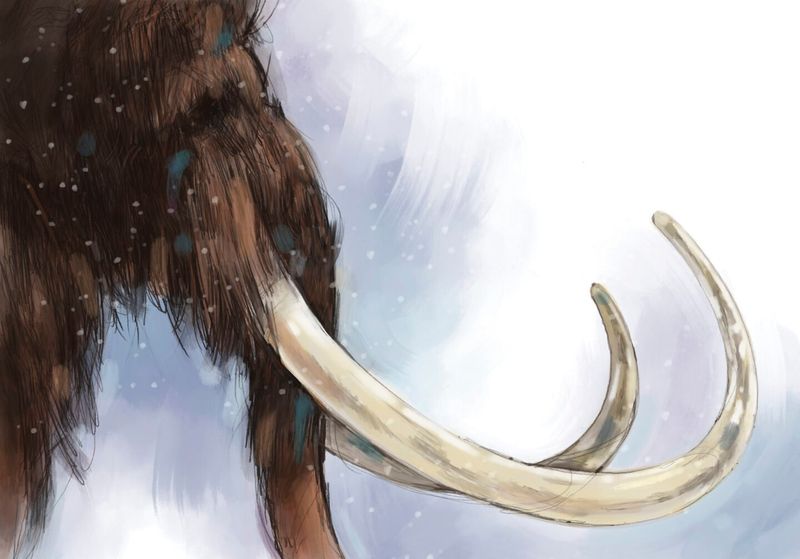
Woolly mammoths were equipped with impressive teeth designed for their herbivorous diet. What’s truly fascinating is that their teeth were constantly replaced throughout their lifetime.
They went through six sets of molars, each replacing the last as the older ones wore down. This adaptation was essential for grinding tough, fibrous plants. The ability to replace teeth ensured that mammoths could continue feeding effectively as they aged.
This continuous dental regeneration is a remarkable evolutionary trait that contributed to their survival across thousands of years. Their teeth provide valuable insight into their diet and lifestyle.
They Were Smaller Than You Think
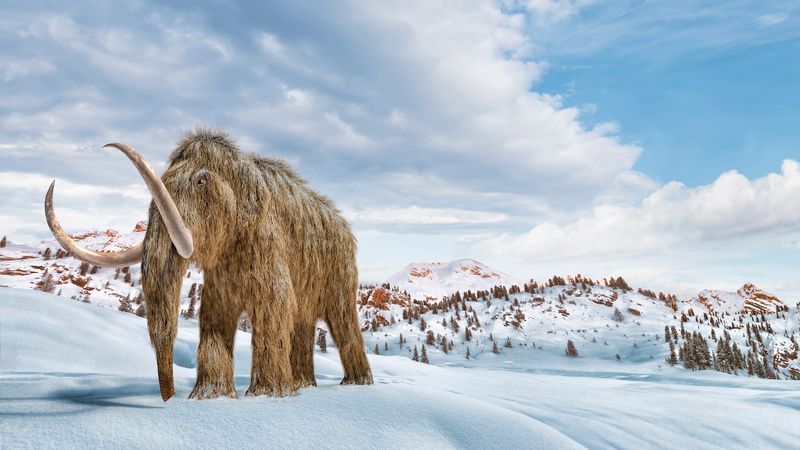
While woolly mammoths are often imagined as gigantic creatures, they were not as large as their African elephant relatives. They stood about 9 to 11 feet tall at the shoulder, which is smaller than today’s largest elephants.
Their size was an adaptation to the cold climate, as a more compact body reduces heat loss. Despite their smaller stature, their massive fur coats made them appear larger.
The misconception about their size might stem from their massive tusks and the dramatic artistic depictions over the years, but these creatures were truly adapted for their icy habitats.
Mammoth Blood Was Anti-Freeze
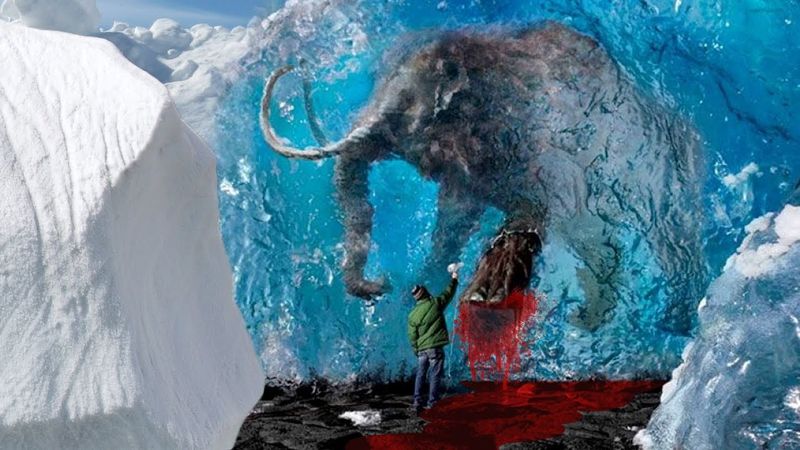
Woolly mammoths had a natural advantage when it came to surviving cold temperatures: their blood acted like antifreeze. Thanks to a special hemoglobin adaptation, their blood maintained its ability to deliver oxygen even in freezing conditions.
This adaptation was crucial for living in the icy environments of the Pleistocene era. Scientists have studied mammoth remains to understand this unique trait, which involved changes in their hemoglobin structure.
Such insights could have applications in modern science, particularly in medicine and understanding cold-weather adaptations in other species.
They Lived with Early Humans
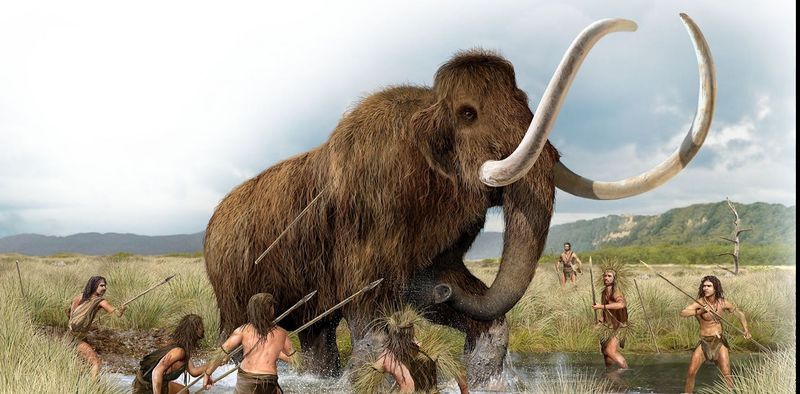
Woolly mammoths shared the earth with early humans, and this coexistence was significant. Ancient humans hunted them for food, used their bones for tools and shelter, and painted them on cave walls. This relationship is evident in various archaeological findings.
Artifacts such as mammoth bone huts and carvings show how integral these creatures were to human survival. The interactions between humans and mammoths have been a subject of study, offering insights into prehistoric life and human evolution.
This period of coexistence showcases the mammoth’s role in human history, influencing both survival and culture.
Mammoths Had a Long Gestation Period
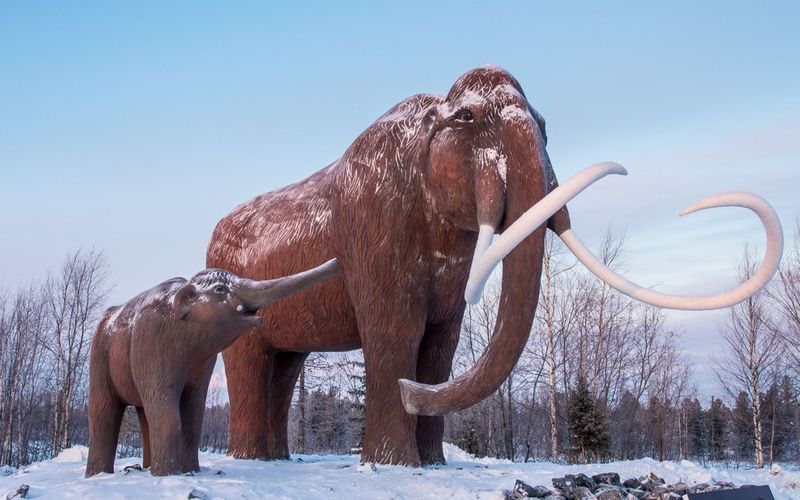
Woolly mammoths had a notably long gestation period, lasting about 22 months, similar to modern elephants. This lengthy gestation allowed for the development of larger brains, which were essential for survival in complex environments.
Long gestation periods also meant fewer offspring over a mammoth’s lifetime, which impacted population growth. Despite this, their social structure helped care for and protect young calves, ensuring their survival.
Understanding their reproductive biology provides valuable insights into their life cycle and how they adapted to the challenges of their era.
They Had a Special Diet

Woolly mammoths had a unique diet that suited their cold environment. They primarily fed on grasses, but their diet also included shrubs, herbs, and even small trees. Their large, flat teeth were perfect for grinding these tough, fibrous plants.
This specialized diet required them to consume vast amounts of vegetation daily to sustain their large bodies. The study of fossilized stomach contents and dung has provided scientists with insights into their dietary habits.
Their ability to adapt their diet to the harsh conditions of the Ice Age is a testament to their resilience and adaptability.
Their Extinction Is a Mystery
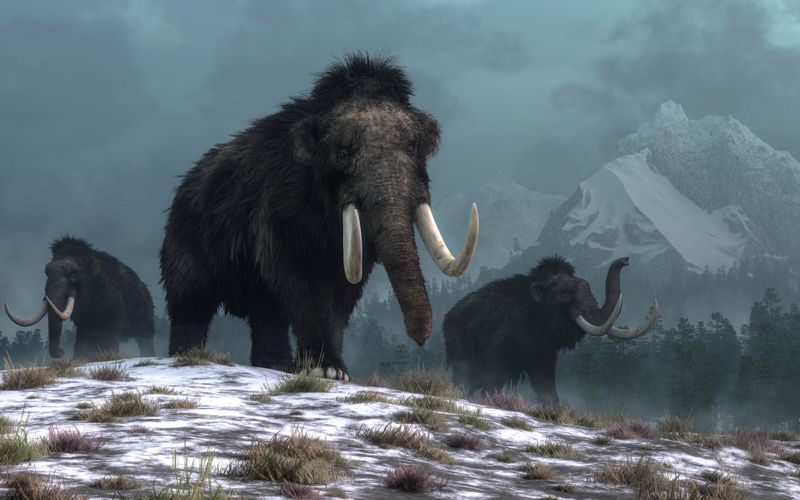
The extinction of woolly mammoths remains a subject of intrigue and debate amongst scientists. While the exact cause is still unclear, climate change and human hunting are the primary suspects.
As the Ice Age ended, their habitats shrank, and food sources dwindled. Simultaneously, early humans became more proficient hunters, possibly hastening their decline. Some believe that a combination of these factors led to their extinction.
Ongoing research continues to unearth clues, but the full story remains elusive. Understanding their extinction could offer valuable lessons on biodiversity and species conservation today.
Revival Through Science

Recent scientific efforts aim to revive the woolly mammoth through genetic engineering. By extracting DNA from preserved mammoth remains and combining it with that of Asian elephants, researchers hope to bring these giants back to life.
This ambitious project is not just about curiosity; it aims to restore ecosystems that once thrived with mammoths. While still in its early stages, this scientific endeavor raises ethical questions and possibilities about de-extinction.
It reflects human curiosity and the desire to understand and possibly rectify past ecological impacts, potentially offering new insights into the natural world.

